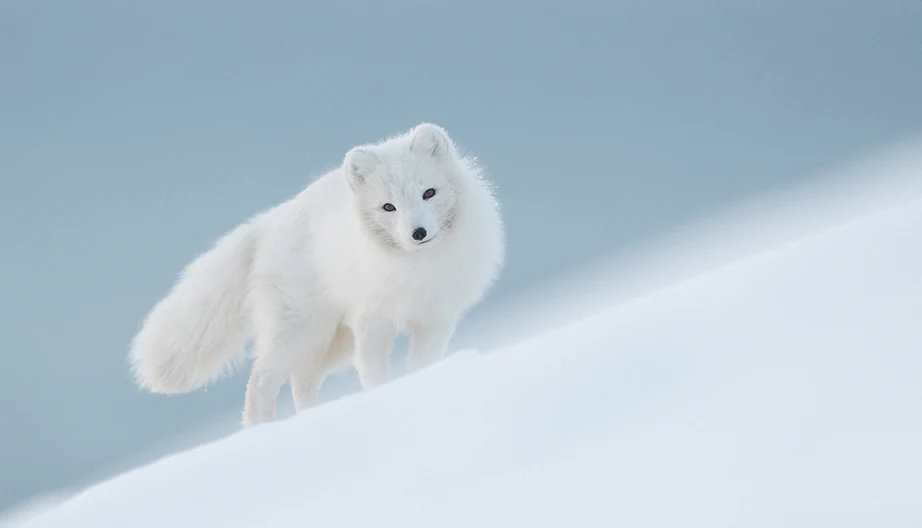In the vast and unforgiving expanse of the Arctic, where icy winds howl and snow blankets the landscape for miles around, one creature stands as a symbol of resilience and adaptability: the Arctic fox (Vulpes lagopus). With its thick fur and keen hunting instincts. This remarkable animal has carved out a niche for itself in some of the harshest environments on Earth. In this article, we delve deep into the world of the Arctic fox, exploring its habitat, behaviors, adaptations, and the challenges it faces in an ever-changing world.
Habitat and Distribution
The Arctic fox is primarily found in the Arctic regions of North America, Greenland, Europe, and Asia. It has a circumpolar distribution, meaning it inhabits the northernmost regions of the planet. Within these regions, Arctic foxes can be found in a variety of habitats, including tundra, mountains Coastal areas, and even near human settlements. Despite the harsh conditions, these resilient creatures have managed to thrive in some of the most inhospitable environments on Earth.
Physical Characteristics
One of the most striking features of the Arctic fox is its thick, luxurious fur. Which serves as insulation against the freezing temperatures of its habitat. During the winter months, the fox’s fur turns white to blend in with the snowy landscape. Providing camouflage against predators such as polar bears and wolves. In the summer, the fur sheds its white hue and adopts a brown or gray coloration. Allowing the fox to blend in with the rocky terrain and vegetation.
Arctic foxes also have other physical adaptations to survive in their harsh environment, including a compact body shape. Small ears, and a bushy tail that can be wrapped around the body for added warmth. These adaptations help the fox conserve heat and navigate through deep snowdrifts with ease.
Feeding Habits and Hunting Strategies
Arctic foxes are opportunistic predators, feeding on a wide variety of prey depending on their availability and location. Their diet includes small mammals such as lemmings, voles, and Arctic hares, as well as birds, eggs, fish, and carrion. During the winter months when prey is scarce, Arctic foxes are known to scavenge from polar bear kills or raid seabird colonies for eggs and chicks.
To hunt effectively in their snowy habitat, Arctic foxes use a combination of stalking, pouncing, and digging techniques. They are skilled diggers, using their keen sense of hearing to locate prey beneath the snow before lunging headfirst to catch it. It with their sharp teeth.
Social Structure and Reproduction
Arctic foxes are generally solitary animals, with individuals maintaining large territories to avoid competition for food and mates. However, during the breeding season, which typically occurs in the spring. They form monogamous pairs and may share dens to raise their young.
Female Arctic foxes give birth to litters of pups in underground dens. They dig into the permafrost or snowbanks for protection against the elements. The average litter size ranges from four to eight pups. Although larger litter has been recorded in years of abundant food availability. Both parents participate in caring for the pups, bringing them food, and guarding the den against potential predators.
Threats and Conservation Status
Despite their resilience and adaptability, Arctic foxes face several threats to their survival. Climate change poses a significant risk to their habitat, altering the distribution of prey species and causing shifts in the timing of seasonal events such as snowmelt and ice formation. This can disrupt the foxes’ breeding and feeding patterns, making it harder for them to survive and raise their young.
Additionally, Arctic foxes are sometimes targeted by humans for their fur, which is prized for its warmth and softness. While hunting and trapping of Arctic foxes is regulated in many countries, illegal poaching still occurs in some regions, posing a threat to local populations.
Conservation Efforts and Future Prospects
Efforts to conserve the Arctic fox are ongoing, with researchers studying their behavior and habitat to better understand their needs and vulnerabilities. Conservation organizations work to protect key habitats and raise awareness about the importance of preserving Arctic ecosystems for future generations.
In conclusion,
the Arctic fox is a fascinating and resilient creature that has adapted to thrive in some of the harshest environments on Earth. With its thick fur, keen hunting instincts, and ability to withstand freezing temperatures, it serves as a symbol of the indomitable spirit of the natural world. However, as climate change and human activities continue to impact the Arctic, we must work together to ensure the long-term survival of this iconic species.
Internal link: bilaar








